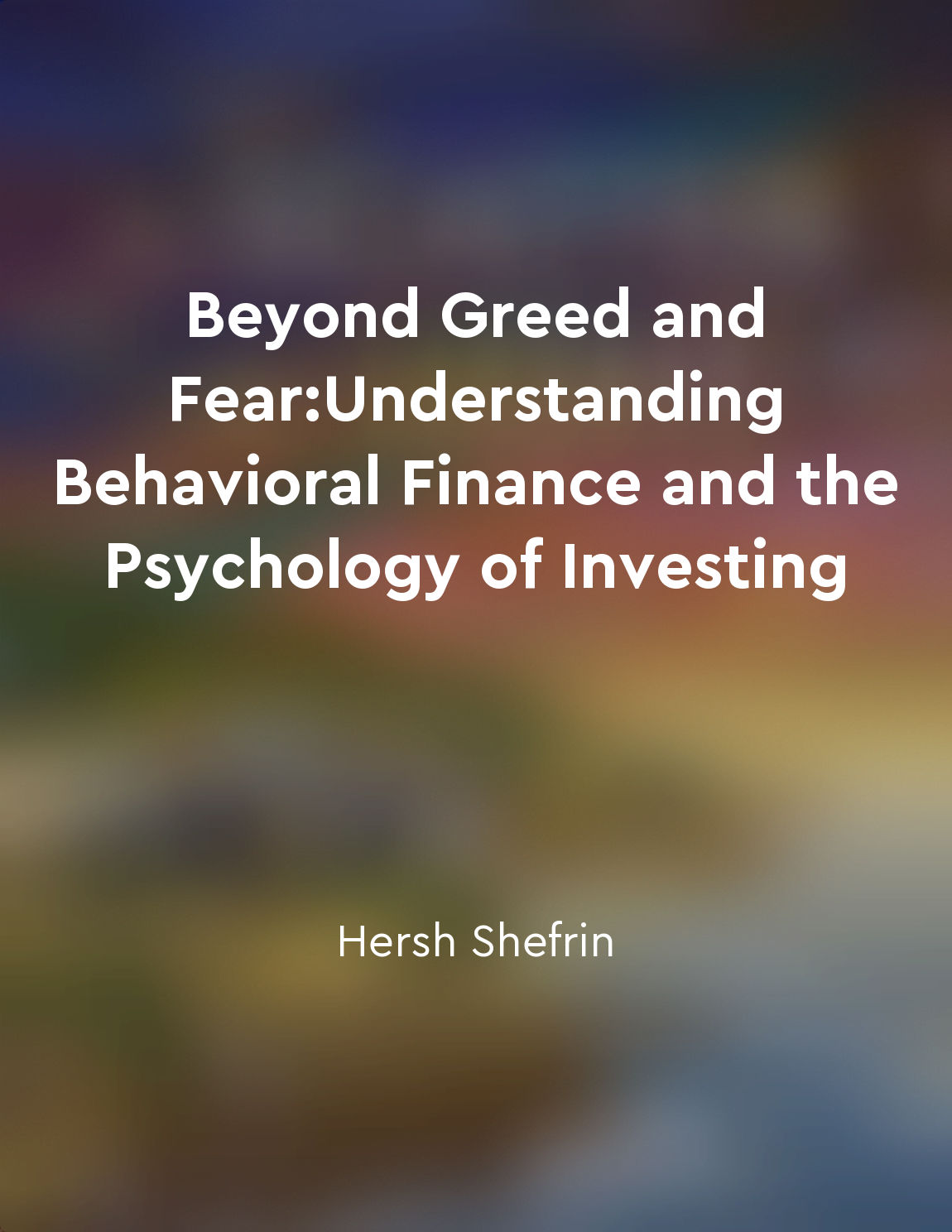Herding behavior can drive market trends from "summary" of Beyond Greed and Fear:Understanding Behavioral Finance and the Psychology of Investing by Hersh Shefrin
In the world of investing, it is often observed that market trends can be heavily influenced by herding behavior. This phenomenon occurs when individuals follow the actions of the majority, rather than making decisions based on their own independent analysis. This behavior can lead to the amplification of market movements, causing prices to rise or fall rapidly as a result of group dynamics rather than fundamental factors. Herding behavior is driven by a variety of psychological factors that influence how individuals perceive and react to information. One such factor is the fear of missing out, or FOMO, which can cause investors to abandon their own judgment in favor of following the crowd. In this way, herding behavior can create a self-reinforcing cycle where individuals continue to follow the trend, even if it is not based on rational analysis. Furthermore, social proof plays a significant role in herding behavior, as individuals often look to the actions of others to guide their own decisions. This can lead to a feedback loop where investors buy or sell assets simply because others are doing the same, regardless of the underlying value of the investment. As a result, market trends can be driven by the actions of the crowd rather than by objective market fundamentals. Herding behavior can also be exacerbated by cognitive biases, such as anchoring and confirmation bias, which cause individuals to rely on heuristics and past experiences rather than conducting a thorough analysis of the current situation. This can lead to a situation where investors ignore contradictory information and continue to follow the herd, even if it is not in their best interest.- Herding behavior can have a significant impact on market trends, driving prices to unsustainable levels before eventually leading to a correction. By understanding the psychological factors that drive this behavior, investors can better navigate market trends and make more informed decisions based on their own independent analysis.


